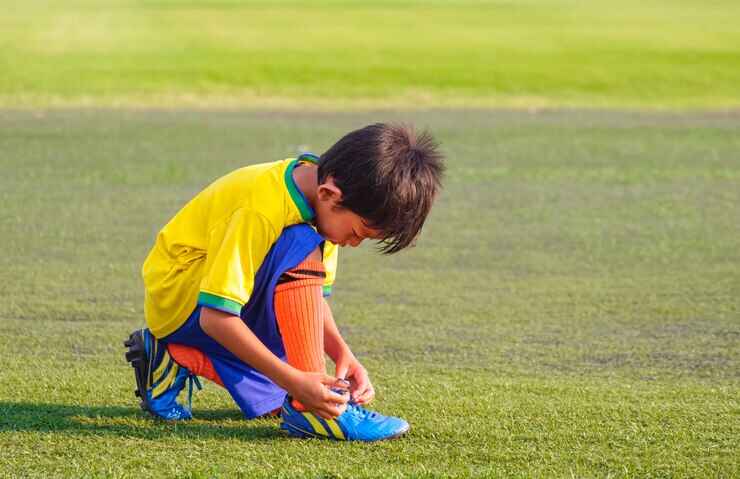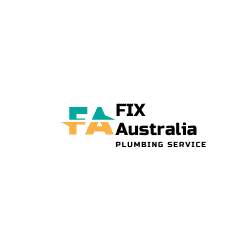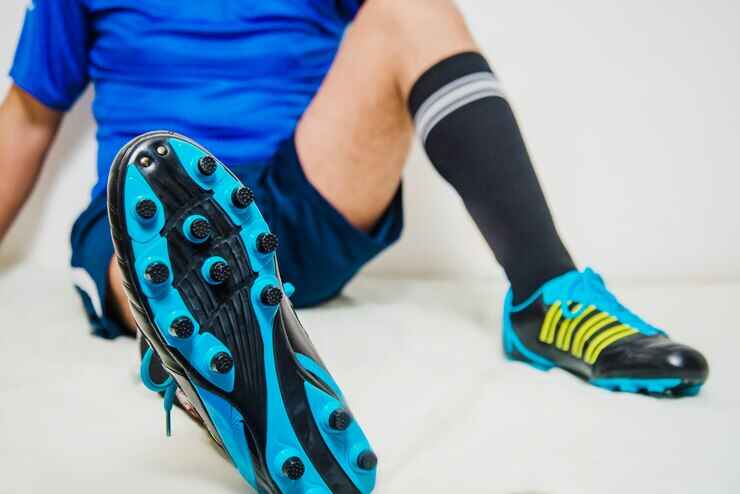When parents or young players gear up for soccer season, one common question pops up: Are metal cleats allowed in youth soccer? The short answer is no, most youth soccer leagues do not allow metal cleats. However, the rules can vary depending on the league, age group, and location. This guide breaks down everything you need to know about youth soccer cleat rules, why metal cleats are often banned, and how to choose the best footwear for your child.
Why Most Youth Soccer Leagues Ban Metal Cleats
Safety is the primary reason youth soccer organizations ban metal cleats. Young players are still developing their coordination and control, increasing the risk of accidental injuries. Metal cleats have sharp, protruding studs that can cause cuts, bruises, or more severe harm during tackles, slides, or collisions.
Leagues like the United States Youth Soccer Association (USYSA) and the American Youth Soccer Organization (AYSO) enforce strict rules against metal cleats for players under a certain age (usually under 13). Even international bodies like FIFA restrict metal cleats in youth matches to prioritize player safety.
Additionally, metal cleats can damage fields, especially wet or soft turf. This creates uneven playing surfaces and increases maintenance costs for clubs.
Which Youth Soccer Leagues Allow Metal Cleats?
While most youth leagues ban metal cleats, exceptions exist for older age groups or competitive tiers. For example:
- High School Soccer: Some states permit metal cleats for high school players (ages 14+), but rules vary. Always check with your state’s athletic association.
- Elite Club Leagues: Competitive travel teams or academies for older teens (16+) may allow metal cleats if players demonstrate advanced skill and control.
- International Competitions: FIFA allows metal cleats in professional leagues but rarely for youth players.
Always confirm your league’s rules before buying cleats. A simple email to the coach or league organizer can save you time and money.
Metal Cleats vs. Plastic Cleats: Key Differences
Understanding the differences between metal and plastic cleats helps parents make informed choices:
| Feature | Metal Cleats | Plastic Cleats |
| Safety | Higher risk of cuts, bruises, or sprains due to sharp metal studs. | Safer for youth players; rounded, blunt studs reduce injury risk. |
| Traction | Better grip on muddy, wet, or soft natural grass fields. | Adequate traction for most youth fields (dry grass, turf, or hard ground). |
| Weight | Heavier; may slow down younger players. | Lightweight; improves speed and agility for developing athletes. |
| Durability | Metal studs wear down faster on hard surfaces; prone to rust. | Durable; withstands frequent use on grass, turf, and indoor surfaces. |
| Cost | Typically more expensive (80–80–150+). | Affordable (30–30–80); cost-effective for growing feet. |
| League Acceptance | Banned in most youth leagues (under age 13); allowed only in older competitive tiers. | Approved by nearly all youth leagues (AYSO, USYS, school soccer, etc.). |
| Field Impact | Can damage fields, especially wet turf or soft grass. | Gentle on fields; ideal for artificial turf and natural grass. |
| Maintenance | Requires regular inspection for sharp edges, rust, or loose studs. | Low maintenance; easy to clean and store. |
| Age Recommendation | Older teens (14+) in select leagues; not suitable for young children. | Recommended for all ages, especially players under 13. |
Key Takeaways
- Safety First: Plastic cleats dominate youth soccer due to their lower injury risk.
- Cost-Effective: Plastic cleats are budget-friendly and last longer for growing players.
- League Rules: Always check your league’s guidelines before purchasing cleats.
This table simplifies the decision-making process for parents and coaches prioritizing safety, performance, and compliance with youth soccer rules.
How to Choose the Right Cleats for Your Child
Follow these steps to pick safe, league-approved soccer cleats:
1. Check League Rules First
Confirm whether your child’s league allows metal, plastic, or turf cleats. Most youth leagues mandate plastic molded cleats.
2. Priorize Fit and Comfort
Kids’ feet grow quickly, so avoid tight cleats. Leave a thumb’s width of space between the toe and shoe tip. Look for breathable materials to prevent blisters.
3. Consider Playing Surfaces
- Firm Ground (FG) Cleats: Best for natural grass fields.
- Turf Shoes: Ideal for artificial turf.
- Indoor Shoes: Use flat soles for indoor courts.
4. Focus on Ankle Support
High-top cleats can prevent ankle injuries for younger players still mastering balance.

What If Your Child Prefers Metal Cleats?
Some older teens or competitive players argue that metal cleats improve performance. If your child’s league allows metal cleats, follow these safety tips:
- Inspect Studs Regularly: Ensure metal studs are blunt, not sharp or rusted.
- Use Shin Guards: Properly fitted shin guards protect against accidental kicks.
- Practice Safe Tackling: Coaches should teach proper techniques to minimize reckless challenges.
Top Alternatives to Metal Cleats
If metal cleats are banned in your league, try these alternatives:
1. Molded Plastic Cleats
Most youth leagues recommend these for their safety, affordability, and versatility. Brands like Nike, Adidas, and Puma offer durable options.
2. Turf Shoes
These have small rubber studs perfect for artificial turf or hard ground.
3. Indoor Soccer Shoes
Flat-soled shoes with grip patterns work well for indoor courts or gym floors.
Tips for Parents and Coaches
- Double-Check League Guidelines: Rules can change yearly. Verify cleat policies at the start of each season.
- Teach Proper Cleat Care: Clean cleats after games to prevent wear and tear.
- Emphasize Safety Over Style: Kids might want “cool” cleats, but safety should always come first.
Conclusion
Metal cleats are generally not allowed in youth soccer for players under 13, and even older teens must follow league-specific rules. Plastic cleats remain the safest, most practical choice for young athletes. Always prioritize your child’s safety by checking league guidelines, investing in proper footwear, and teaching respectful play.
Are metal cleats allowed in youth soccer? By understanding the rules and focusing on development over competition, you’ll help your child enjoy soccer while staying injury-free. When in doubt, ask coaches or league officials—they’re there to help!
FAQs
1. Can 12-year-olds wear metal cleats?
Most leagues ban metal cleats for players under 13. Stick with plastic cleats unless your league explicitly allows metal.
2. How do I know if my child’s cleats are legal?
Check the soles. Metal cleats have removable or fixed metal studs, while plastic cleats have molded rubber studs.
3. What happens if my child wears metal cleats illegally?
Referees may bar your child from playing until they change footwear. Repeat offenses could lead to suspensions.
4. Are there hybrid cleats with metal and plastic studs?
Yes, but most youth leagues still ban them due to the metal components.

